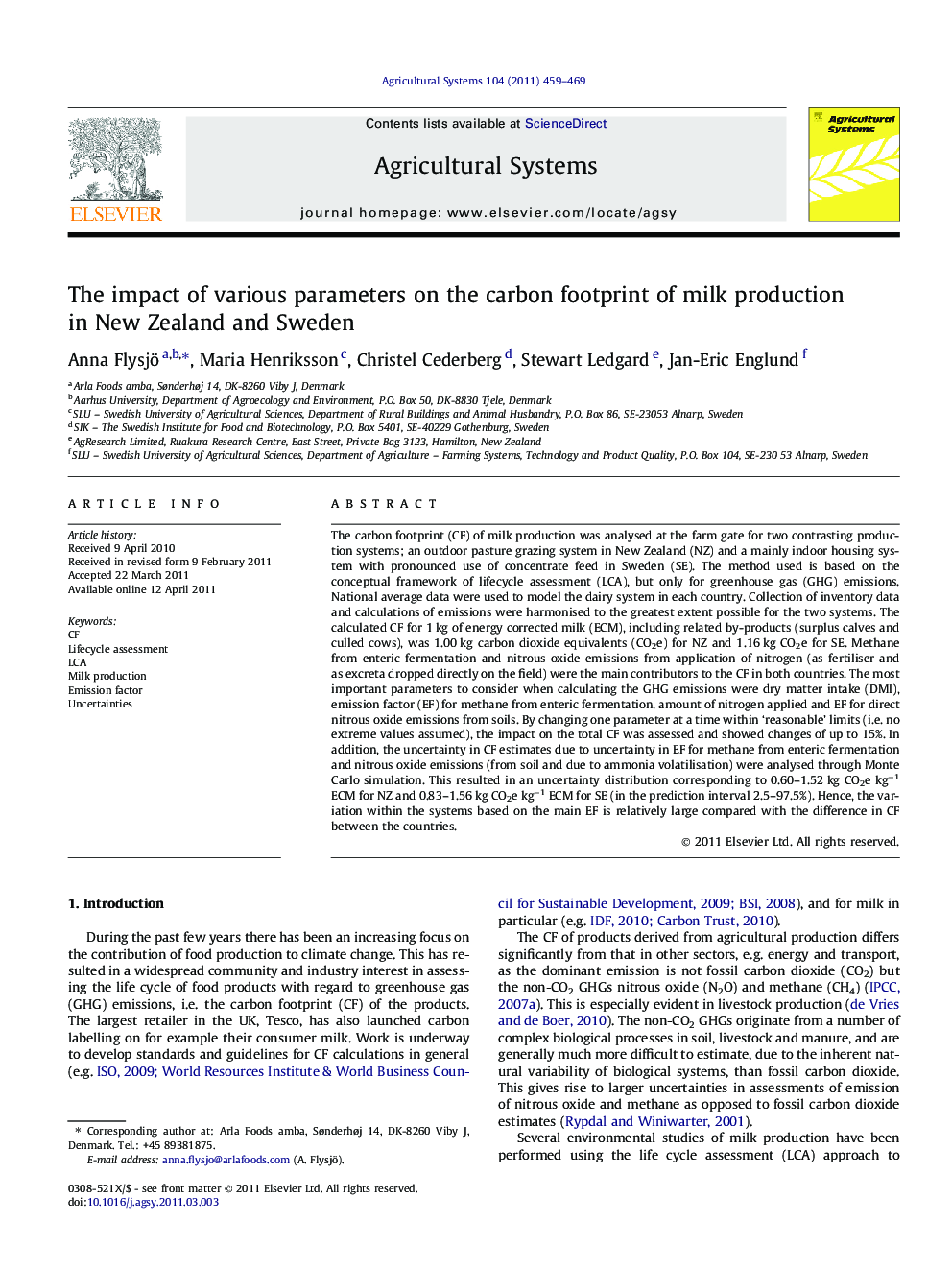| کد مقاله | کد نشریه | سال انتشار | مقاله انگلیسی | نسخه تمام متن |
|---|---|---|---|---|
| 4491464 | 1317854 | 2011 | 11 صفحه PDF | دانلود رایگان |

The carbon footprint (CF) of milk production was analysed at the farm gate for two contrasting production systems; an outdoor pasture grazing system in New Zealand (NZ) and a mainly indoor housing system with pronounced use of concentrate feed in Sweden (SE). The method used is based on the conceptual framework of lifecycle assessment (LCA), but only for greenhouse gas (GHG) emissions. National average data were used to model the dairy system in each country. Collection of inventory data and calculations of emissions were harmonised to the greatest extent possible for the two systems. The calculated CF for 1 kg of energy corrected milk (ECM), including related by-products (surplus calves and culled cows), was 1.00 kg carbon dioxide equivalents (CO2e) for NZ and 1.16 kg CO2e for SE. Methane from enteric fermentation and nitrous oxide emissions from application of nitrogen (as fertiliser and as excreta dropped directly on the field) were the main contributors to the CF in both countries. The most important parameters to consider when calculating the GHG emissions were dry matter intake (DMI), emission factor (EF) for methane from enteric fermentation, amount of nitrogen applied and EF for direct nitrous oxide emissions from soils. By changing one parameter at a time within ‘reasonable’ limits (i.e. no extreme values assumed), the impact on the total CF was assessed and showed changes of up to 15%. In addition, the uncertainty in CF estimates due to uncertainty in EF for methane from enteric fermentation and nitrous oxide emissions (from soil and due to ammonia volatilisation) were analysed through Monte Carlo simulation. This resulted in an uncertainty distribution corresponding to 0.60–1.52 kg CO2e kg−1 ECM for NZ and 0.83–1.56 kg CO2e kg−1 ECM for SE (in the prediction interval 2.5–97.5%). Hence, the variation within the systems based on the main EF is relatively large compared with the difference in CF between the countries.
► The carbon footprint (CF) of milk production in New Zealand and Sweden was analysed.
► Single parameters (e.g. feed intake and emission factors) had large impact on the CF.
► Variation in CF due to uncertainties in emission factors was larger than CF between the countries.
► As result of variation in CF, no significant difference between the countries could be concluded.
Journal: Agricultural Systems - Volume 104, Issue 6, July 2011, Pages 459–469